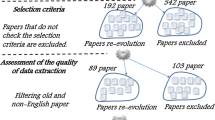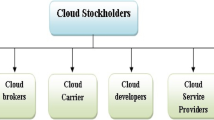Abstract
This paper has proposed a new metric for characterizing the load of a uniprocessor computer. This metric is defined as a ratio of the average waiting time experienced by computing tasks to the average idle time of the processor. This definition is based on two important observations. As the load becomes heavier, the average idle time of a processor becomes shorter, and the average waiting time experienced by computing tasks becomes longer. The new load metric aims to have an enhanced ability in distinguishing different load status. The valid comparison of different load status using the new load metric is subject to the satisfaction of certain conditions: a majorization has to be satisfied between two processes of the measures (idle time or waiting time). The ability of the new load metric on distinguishing different load status has been validated through numerical simulations. The results showed that the new load metric can facilitate balancing the load among multiple servers better than the conventional load metric of average utilization, when they are used as the task assignment criteria.
Similar content being viewed by others
References
Kleinrock L (1976) Queueing systems. Wiley, New York
Fei Z, Bhattacharjee S, Zegura EW, Ammar MH (1998) A novel server selection technique for improving the response time of a replicated service. In: Proceedings of the IEEE international conference on computer communications (INFOCOM), San Francisco, CA, March 29–April 2 1998, pp 783–791
Prabhakar B, Gallager R (2003) Entropy and the timing capacity of discrete queues. IEEE Trans Inf Theory 49(2):357–370
Brighten G, Stoica I (2008) Heterogeneity and load balance in distributed hash tables. In: Proceedings of the IEEE international conference on computer communications (INFOCOM), Hong Kong, China, March 7–11 2004
Hardy GH, Littlewood JE, Pólya G (1952) Inequalities. Cambridge University Press, Cambridge
Marshall AW, Olkin I (1979) Inequalities: theory of majorization and its applications. Academic Press, San Diego
Bhatia R (1996) Matrix analysis. Springer, New York
Chang C-S (1992) A new ordering for stochastic majorization: theory and applications. Adv Appl Probab 24:604–634
Coffman EG Jr, Bruno J, Downey P (1995) Scheduling independent tasks to minimize the makespan on identical machines. Probab Eng Inf Sci (Cambridge University Press) 9(3):447–456
Koole G, Liu Z, Towsley D (1999) Comparing queueing systems with heterogeneous on-off sources. Vrije Universiteit Amsterdam, Technical Report WS-533
Morales D, Pardo L, Vajda I (1996) Uncertainty of discrete stochastic systems: general theory and statistical inference. IEEE Trans Syst Man Cybern 26(6):681–697
Ebrahimi N, Soofi ES, Zahedi H (2004) Information properties of order statistics and spacings. IEEE Trans Inf Theory 50(1):177–183
Lindley DV (1952) The theory of queues with a single server. Proc Camb Philos Soc 48:277–289
Cover TM, Thomas JA (1991) Elements of information theory. Wiley-Interscience, New York
Weibull W (1939) A statistical theory of the strength of material. Proc R Swed Inst Eng Res 151(1)
Leland WE, Taqqu MS, Willinger W, Wilson DV (1993) On the self-similar nature of Ethernet traffic. In: Sidhu DP (ed) Proceedings of the ACM international conference on communications architecture and protocols (SIGCOMM), San Francisco, CA, September 13–17 1993, pp 183–193
Author information
Authors and Affiliations
Corresponding author
Rights and permissions
About this article
Cite this article
Liu, J. A novel load metric with enhanced ability of distinguishing different load status. J Supercomput 59, 589–609 (2012). https://doi.org/10.1007/s11227-010-0456-5
Published:
Issue Date:
DOI: https://doi.org/10.1007/s11227-010-0456-5




